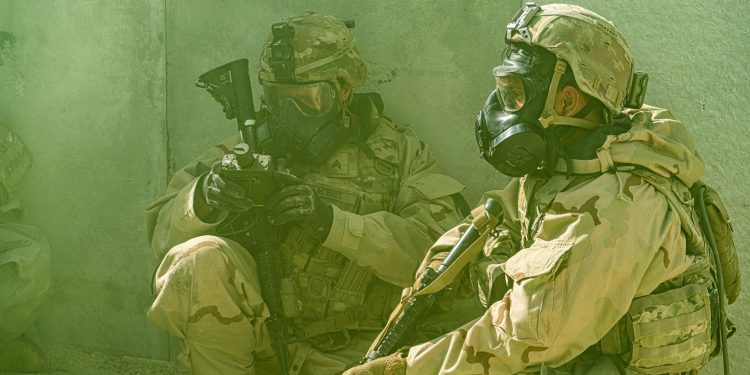The Department of Defense is modernizing its approach for developing medical countermeasures to protect warfighters from novel biological agents.
This is made clear in a new document, “Approach for Research, Development and Acquisition of Medical Countermeasures and Test Products,” which was recently published by the Office of the Deputy Assistant Secretary of Defense for Chemical and Biological Defense. This office oversees the Department of Defense’s Chemical and Biological Defense Program. The CBDP’s mission is to anticipate future threats and deliver capabilities that enable the Joint Force to fight and win in CB-contested environments.
The CBDP has always prioritized medical countermeasures, which consist of vaccines, medical tests and drugs. “No matter how good our boots, suits, gloves and masks perform, there’s always going to be the risk that our warfighters don’t necessarily have their equipment on when they need it. So having medical countermeasures as an added layer for protection makes sense,” Dr. Kevin Wingerd, CBDP’s medical director, said.
What has changed is the nature of the threat.
“The convergence of different sciences and technologies is transforming the biological threat landscape,” Wingerd said. “In particular, it has created a nearly limitless number of potential threats we must defend against.”
This contrasts to the past, when DOD developed medical countermeasures against a defined list of specific threats, typically ones adversaries had already weaponized. But this “one bug, one drug” approach isn’t viable in the face of the exponentially larger number of potential threats, including novel ones.
Nor is the Department solely focused on deliberate biological threats. In his Biodefense Vision Memo published in November 2021, Secretary of Defense Lloyd J. Austin III directed the Department to be postured against agents that are naturally occurring as well as those that may have been released accidentally, alongside traditional deliberate ones. The new medical countermeasures approach provides a roadmap to address this more challenging problem set.
According to the document, nonspecific medical countermeasures will enable warfighters to remain on the battlefield after being exposed to an agent. After that agent has been identified, rapid development of medical countermeasures that eliminate the specific threat will be given to all warfighters, including those newly entering the battle.
Nonspecific medical countermeasures are broad-spectrum acting and are designed to target a set of similar agents, diseases or symptoms. Nonspecific medical countermeasures are particularly vital for novel agents that have no medical countermeasures. Administrating nonspecific medical countermeasures could alleviate symptoms, slow down disease progression and reduce transmission of the agent, allowing troops to remain in the battle with little impairment. While the agent may be suppressed for a given period, a medical countermeasure that targets and eliminates the novel agent is still required.
As Wingerd puts it, “Using nonspecific medical countermeasures allows the agent’s effects to be mitigated and the warfighter to remain operational and combat ready, while simultaneously allowing for rapid development of specific medical countermeasures that can be used to completely get rid of the agent and protect incoming warfighters.”
To rapidly develop narrow-spectrum medical countermeasures, the CBDP will leverage cutting edge technology including artificial intelligence and machine learning and establish partnerships with known pharmaceutical manufacturers. The CBDP considers manufacturing capacity a strategic challenge, which the new approach addresses as a goal.
“In a response preparedness posture, we need to invest in unique medical infrastructure designed to rapidly produce new vaccines and drugs, and leverage existing medical infrastructure by adapting them to target new agents quickly,” Wingerd explained.
“What COVID has certainly taught us is that if that industrial base isn’t present, it doesn’t matter how good your ideas are, they’re just not going to go anywhere,” he added, mentioning that partnerships with the interagency, academia and U.S. allies and partners are also critical.










